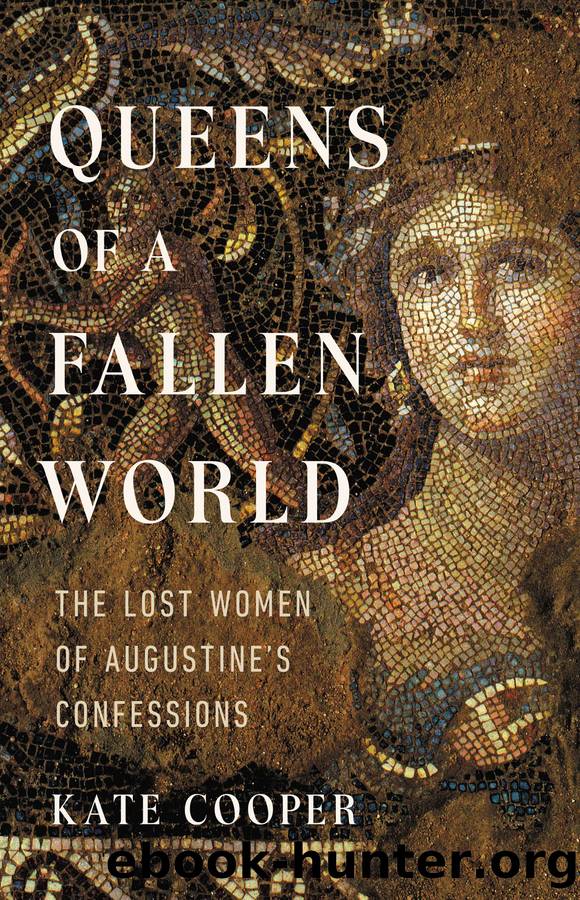Queens of a Fallen World by Kate Cooper

Author:Kate Cooper [Cooper, Kate]
Language: eng
Format: epub
Publisher: Basic Books
Published: 2023-04-18T00:00:00+00:00
In 385 and 386 Ambrose decided to provoke an outright face-off with the imperial family over who controlled the cityâs churches. We have seen that between 381 and 385 the Eastern emperor Theodosius and his empress, Flaccilla, had discovered in Constantinople that well-judged appearances of the imperial family could do a great deal to generate support for the emperor and his armiesâindeed, when the emperor was away campaigning, his wife and children could spark popular support back in the capital simply by letting themselves be seen among the people.30 The clergy, who could be remarkably valuable allies, were grateful for the attention this brought to their liturgies.
On the face of things, Milan was in principle the perfect place for this kind of collaboration between the bishop and the palace. The city had seen a wave of church building in recent years, sponsored by both the bishops and the imperial family. A new cathedral, the Basilica Nova, had been built in the city center before Bishop Ambroseâs time, and he himself was overseeingâand financingâthe construction of churches in the cemeteries outside the city walls.31 But the relationship between cathedral and palace was developing very differently in Milan than in the Eastern capital. In 385 and 386 control over the churches became the point of contention in a clash between Ambrose and the palace known as the âConflict of the Basilicas.â32
The jewel in the ring of churches around Milan was one now known as San Lorenzo, which stood on the road running south to Ticinum (modern Pavia), directly south of the Imperial Palace and close to the amphitheater. The only suburban church of the period not linked to Ambrose, San Lorenzo may have been built at the same time as the Basilica Nova, before his time.33 Because of its magnificent architecture and decorationâa dome sitting above four majestic colonnaded apses, built of brick and concrete with an interior crafted of porphyry, marble, and mosaicâone medieval bishop called it âthe most beautiful church in Italy.â34 Both its splendor and its location close to the palace suggest that the church was an imperial foundation. It is unlikely that San Lorenzo was originally dedicated to the martyr St. Laurenceâthe earliest evidence for the dedication is from the sixth century35âand it has been suggested that the church can be identified as the Basilica Portiana, the church that stood at the center of the dispute between Justina and Ambrose.
Gratianâs death in the summer of 383 had brought an end to Ambroseâs undisputed supremacy in Milan. Valentinian and his mother, Justina, were proving far less pliable than Gratian and Constantia. Justina had ideas of her own: she was aware of the value of what Theodosius had achieved in Constantinople and of the opportunities Gratian had missed. The now indispensable dowager empress knew that her son needed to have his people see him in church, and she wanted these appearances to be carefully orchestrated by the palace. This was the root of the falling-out between the empress and the bishop.
Download
This site does not store any files on its server. We only index and link to content provided by other sites. Please contact the content providers to delete copyright contents if any and email us, we'll remove relevant links or contents immediately.
| France | Germany |
| Great Britain | Greece |
| Italy | Rome |
| Russia | Spain & Portugal |
Fanny Burney by Claire Harman(25792)
Empire of the Sikhs by Patwant Singh(22185)
Out of India by Michael Foss(16315)
Leonardo da Vinci by Walter Isaacson(11919)
Small Great Things by Jodi Picoult(6108)
The Six Wives Of Henry VIII (WOMEN IN HISTORY) by Fraser Antonia(4800)
The Wind in My Hair by Masih Alinejad(4428)
The Lonely City by Olivia Laing(4127)
The Crown by Robert Lacey(4115)
A Higher Loyalty: Truth, Lies, and Leadership by James Comey(4041)
The Iron Duke by The Iron Duke(3651)
Millionaire: The Philanderer, Gambler, and Duelist Who Invented Modern Finance by Janet Gleeson(3576)
Sticky Fingers by Joe Hagan(3457)
Alive: The Story of the Andes Survivors by Piers Paul Read(3320)
Papillon (English) by Henri Charrière(3280)
Joan of Arc by Mary Gordon(3271)
Stalin by Stephen Kotkin(3091)
Aleister Crowley: The Biography by Tobias Churton(3026)
Ants Among Elephants by Sujatha Gidla(2928)
